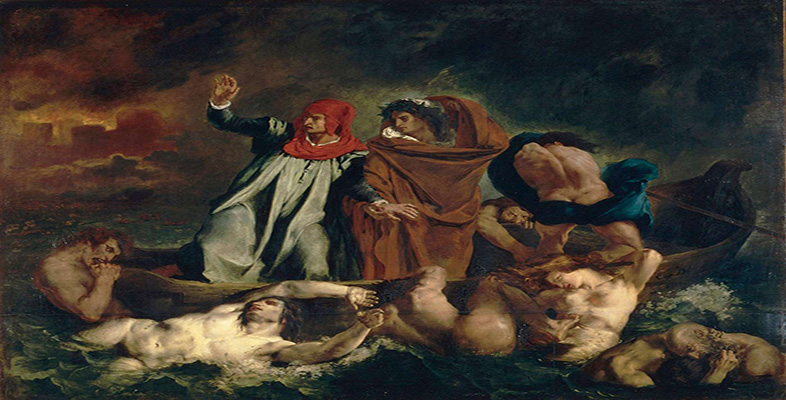5.7 Extremes of modernity
Between 1826 and 1828, after seeing in London a dramatic adaptation of Goethe’s play, Delacroix made a series of 18 lithographs of Faust (Plates 31–36 are reproductions of six of these). A mixture of the comic and evil, these lithographs encapsulate both the sublime and Hugo’s grotesque. They are peopled by strange, elongated figures, whose features have been described as ‘mantis-like’; they have ‘overt ball-and-socket jointing for elbows and knees’ and are dressed in sixteenth-century style, in ‘scaly, spiky costumes that seem to have a life independent of their wearers’ (Joannides, 2001, p.142). This ‘satanic’ style (to use Stendhal’s term) was drawn partly from prints of sixteenth-century Northern artists. The bodies of these insect-like figures express perfectly their moral qualities. Goethe said that in the lithographs Delacroix had surpassed the writer’s own vision. But in spite of a contemporary fashion for the Gothic and the series’ use of medieval settings, it did not sell well. Like Sardanapalus, it earned Delacroix many insults – including that of belonging to the ‘school of the ugly’. Meanwhile, alongside Sardanapalus at the Salon of 1827–8, Delacroix exhibited a painting entitled Mephistopheles appears before Faust (see Plate 37). Of a more orderly composition, it nevertheless resembles Sardanapalus in its opulent red and gold colour scheme and in its references to evil and death. The antithesis of ideal classical beauty and of a didactic academic tradition, the Faust series of lithographs expresses the far reaches of Delacroix’s modernity. Indeed, the ghosts, devils, skulls, monsters and galloping horses in the lithographs and in the painting synthesise and express the total liberation of his imagination.
Click to see Plate 31: Eugène Delacroix, Mephistopheles appears before Faust [Tip: hold Ctrl and click a link to open it in a new tab. (Hide tip)]
Click to see Plate 32: Eugène Delacroix, Duel with Valentine
Click to see Plate 33: Eugène Delacroix, Faust and Mephistopheles
Click to see Plate 34: Eugène Delacroix, Mephistopheles in the Air
Click to see Plate 35: Eugène Delacroix, Faust attempts to seduce Marguerite
Click to see Plate 36: Eugène Delacroix, Marguerite’s Ghost appears to Faust
Click to see Plate 37: Eugène Delacroix, Mephistopheles appears before Faust
